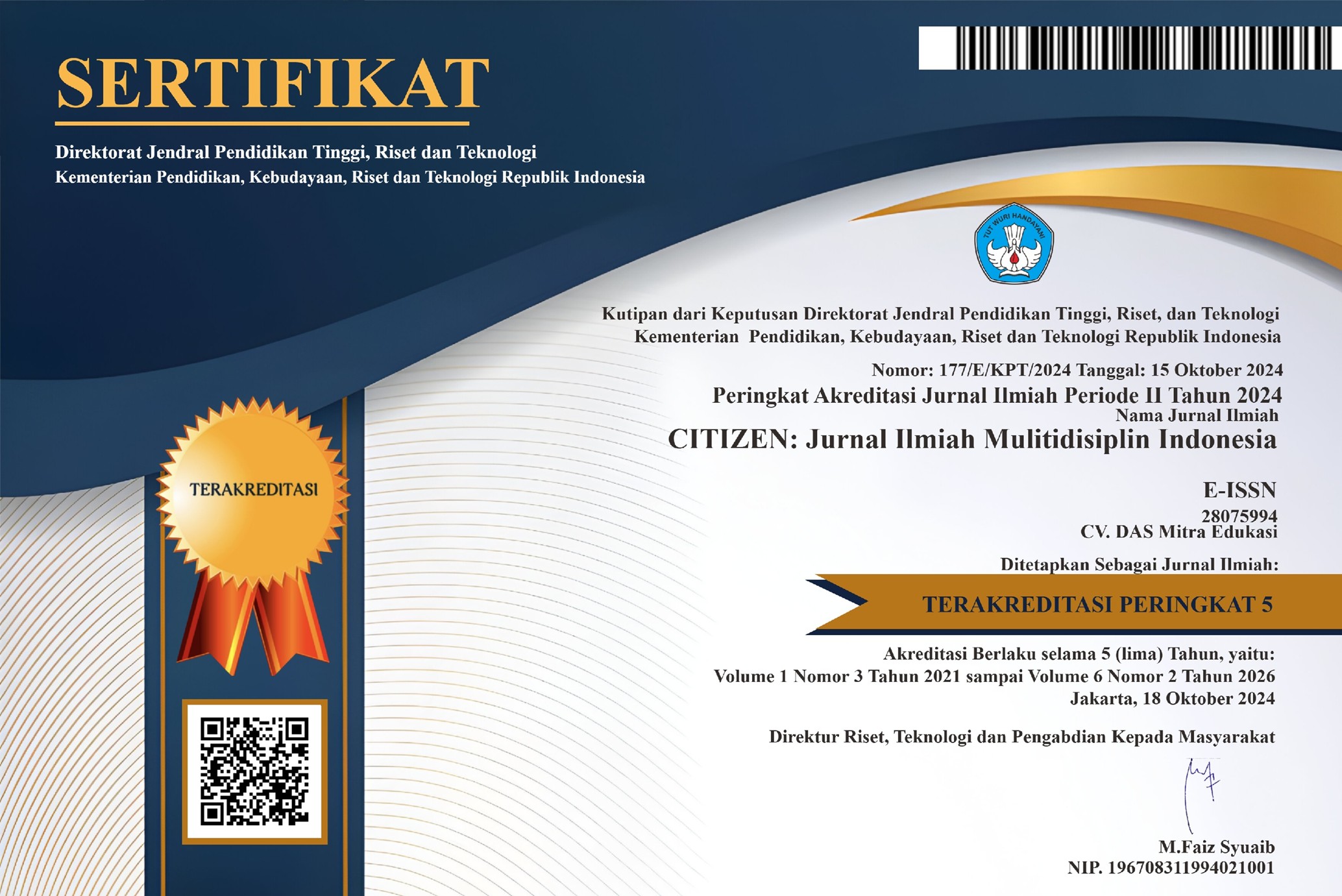EKSPERIMEN KEGAGALAN BREAKOUT CHEMICAL ANCHOR STUD METODE CAST IN PLACE DAN POST INSTALLED DENGAN MODIFIKASI LUBANG DRILL BIT EXTRACTOR
DOI:
https://doi.org/10.53866/jimi.v2i3.104Keywords:
Anchor Stud, Breakout, Cast In Place, Drill Bit Extractor, Post Installed, Pullout Test, Sika Anchorfix-2Abstract
Anchors are needed to transmit the load to the concrete in strengthening the structure of a building. The anchor is installed in two ways, namely the cast in place method and the post installed method. In the post installed method, given Sika anchorfix-2 adhesive. The study was conducted to determine the type of failure that occurred, the pullout capacity of the anchor implanted on the hef 90 mm, and the average value of the adhesive strength (μ) of the M12 x 160 mm stud anchor on the T beam specimen measuring 390 x 270 x 300 mm as many as three samples. Each method of cast in place, post installed plain holes, and post installed screw holes using 32.30 MPa fc' concrete with pullout test. The results of the study, the type of failure that occurs is a breakout failure. The pulling capacity value obtained in the cast in place method is 14415.78 N, the plain hole post installed method is 77603.29 N, and the screw hole post installed method is 87377.25 N. The anchoring strength capacity of the plain hole post installed method is higher. greater than the cast in place method with an increase of 6.82%, the adhesive strength of the post installed method with threaded holes is greater than the cast in place method with an increase of 8.14%, and the adhesive strength of the post installed method of threaded holes is greater than the post installed method of holes plain with an increase of 1.24%.
References
Anonim. (ACI. 2011. ACI Standard: Building Code Requirements for Structural Concrete (ACI 318-11) and Commentary. Farmington Hills MI: American Concrete Institute.
Dary, R. W. (2014). 1702-2668-1-PB. Rekayasa Struktur dan Infrastruktur, vol.viii, 70–82.
Delhomme, Fabien., Brun, Michael. 2018. Pullout Simulation of Post Installed Chemically Bonded Anchors In UHPFRC. INSA-Lyon. France.
Dewobroto, W. (2015). Struktur Baja: Perilaku, Analisis & Desain-AISC 2010. In: Jurusan Teknik Sipil UPH.
Eligehausen, R., Mallée, R., & Silva, J. F. 2006. Anchorage in concrete construction (Vol. 10): John Wiley & Sons.
Nawy, E.G. 1998. Beton Bertulang – Suatu Pendekatan Dasar. Terjemahan. Cetakan keempat. Refika Aditama. Bandung. hal 397-399.
Nuryani TA. 2005. Pengaruh Rasio Tulangan Pada Berbagai Mutu Beton Terhadap Penguatan Tarik Baja Tulangan Beton Bertulang (Tension Stiffening Effect). Tesis. Program Pascasarjana Universitas Diponegoro. Semarang. hal 12.
Park, R & Paulay, T. 1975. Reinforced Concrete Structure. Department of Civil Engineering University of Canterburg. Christ-church. New Zealand. hal 394,396.
SNI 1974, 2011. (2011). Cara Uji Kuat Tekan Beton Dengan Benda Uji Silinder.
SNI 2847, 2019. (2019). SNI 2847-2019 Persyaratan beton struktural untuk bangunan gedung dan penjelasan.
Downloads
Published
How to Cite
Issue
Section
License
Copyright (c) 2022 Novera Kresiariati, Henry Apriyatno

This work is licensed under a Creative Commons Attribution-ShareAlike 4.0 International License.




















